- Home
- Stephen Baxter
Landfall: Tales From the Flood/Ark Universe Page 18
Landfall: Tales From the Flood/Ark Universe Read online
Page 18
‘But wouldn’t that have to be a Sim within the Sim?’
‘I’ll leave that to better theologians than me to sort out. And if this is true, maybe the legends of the source of the Xaians’ plague weapons are true also.’
Lacking metals, the Xaians had never developed starships. They had had to wait until explorers from other worlds, specifically from Urthen, had come to them, with ships ripe for the hijacking. But the storm of extirpation they had unleashed subsequently on their companion human worlds had relied on biological weapons of devastating ferocity. When the Xaians had been driven back, they had taken the weapons with them. Even now, visitors to this world had to undergo heavy programmes of inoculation to protect them against lingering, ineradicable traces – programmes LuSi and Tanz between them had had to force SheLu to endure, so impatient had she been to get on with her work. The Xaians had never admitted the source of these weapons.
‘The legend is,’ SheLu said, ‘that the Xaian scholars found a way to interrogate the City of the Living Dead, and retrieve secrets from the alien minds stored there. Weapons lore, perhaps? If so no wonder the weapons were so effective; they weren’t human in origin at all. As for the City itself, it was destroyed in the liberation wars. So some say. Or was lost after climate lurches on this unstable world, so others say. It was always very far to the north, always inaccessible.’ SheLu looked up at her daughter. ‘Maybe it still exists out there somewhere. And the people here, these children of the Xaians, know it, and know where it is. Perhaps they anticipate the day when they might get a chance to use it again.’
LuSi stared at the chunks of Purple on the desk. ‘You know, mother, here we are trying to puzzle out human origins. That’s challenge enough. While all around us there are these deeper, older mysteries. Alien life everywhere. Signs of vanished intelligences, on so many worlds. They can’t all have locked themselves away in storage to dream away the Years. But if not, where have they gone?’
SheLu left the question hanging in the air. For a moment they pondered cosmic mysteries together, mother sitting at the desk, daughter standing over her. As if they had forgotten who they were, LuSi thought, forgotten all that had passed between them.
Then a kind of self-awareness returned, and they pulled apart, turned away.
At that moment, providentially, Tanz Vlov bustled into the room, carrying a slate and a sack of scrolls. ‘I have it. The information you sought. I have it!’
And Zaen SheLu fell on the man and his data as if her daughter no longer existed.
LuSi busied herself with her own studies for a full Windru spin, a ‘day’ that was nearly one and a half times a standard Day. She let her mother, and a slightly baffled Tanz Vlov, work through the data he had retrieved from the city’s libraries and archives. When SheLu came to some conclusion, she would not hesitate to let her daughter know.
And, sure enough, towards the evening of the next Windru day, SheLu summoned her. ‘I have found it,’ she said, in an evidently unconscious echo of Tanz’s eager cry of the day before.
‘Found what, mother?’
‘Come and see.’
What Lvov had unearthed was information on a variety of worlds unknown to Urthen science. In their search for human colonies to ‘Normalise,’ the Xaians had carried out a survey of star systems in and even beyond the Bubble of colonisation not equalled before or since.
Tanz Vlov seemed proud to have dug up all this information. ‘Thousands of Years old, this stuff, but presumably still valid, unless the parent stars have blown up, or some such … The Xaian legacy is either venerated or despised, even here on Windru. You can imagine the tact I had to use to extract all this old stuff from the temples and colleges, museums and archives, institutions called the Four Universities which claim a very great age. Even private collections, some of which are like shrines to Xaia …’
‘Don’t boast, little man,’ SheLu said dismissively. ‘The point is,’ she told her daughter, ‘in among all these planetary systems the Xaians found ocean worlds.’ She had pinned images, names, scraps of information about these worlds around her study walls. ‘Worlds more or less like Urthen, worlds more or less habitable for humans, but -’
‘But drowned by oceans.’
‘Yes. Now, look. By interrogating the data I can eliminate many of them as candidates for Urth I. See from the displays how I have filtered them out? Some worlds are in the wrong part of the sky. Others have oceans that are too deep – a world like ours may form with as much as half its mass in water, and an ocean enormously deep. No, Urth I cannot be as drowned as that. Second, I have eliminated worlds orbiting Embers, as our own Urthen does, or dim stars like that of Airtree. Why? Because to be close enough to their stars to be habitable the rotations of such worlds are always tidally locked. They have no “days” – or rather, their spin takes the same time as their turn, their “day” is identical to their “year”. We suspect that Urth I must have had a “day” distinct from its “year”, for those are the units of time that have descended to us: Days, Years, each of which comprises hundreds of Days.’
LuSi saw that this argument eliminated most of the candidate ocean worlds, simply because most of the Galaxy’s stars were small, dim stars, and there was an equally large number of Ember-like failed stars. In any event, now only a handful of candidate planets from the Xaian survey survived, ocean worlds orbiting big, bright stars.
‘The final match,’ SheLu breathed, ‘was against our time units themselves. I sought a world with a day and year that matched our own, or simple multiples or fractions of it. For example the Airtree “watch” is almost exactly one-third of our “Day”; either of those could be a measure of an Urth I spin …’
Following the logic of the display on the study walls, LuSi saw that only one candidate remained, a grainy old image of an otherwise unspectacular ball of steel-grey, cloud-shrouded ocean.
‘Urth I,’ SheLu said, grinning like a self-satisfied child. ‘I have found it.’
‘Perhaps.’ LuSi wished PiRo was here, to judge this as a piece of scientific thinking. SheLu had juggled the facts to fit a preconceived story. Perhaps, even given the same data, a different framing story would have produced a different outcome. ‘But at least we can test this idea -’
‘By going there, yes,’ SheLu said. ‘I have already called the ship. The target world is seven years’ travel from here.’
‘Seven more years!’
‘I know. It’s nothing. We leave tomorrow.’
IV
A light flared in the sky. Lily glanced up, thinking it must be the end of totality, the bright sunlight splashing unimpeded once more on the moon’s face. But the moon, still wholly eclipsed, was as round and brown as it had been before.
It was Jupiter: Jupiter was flaring, still a pinpoint of light, but much brighter, bright enough to cast sharp point-source shadows on the glistening weed of the raft substrate. But the light diminished, as if receding with distance. And soon Jupiter shone alone as it had before.
That was the Ark, she thought immediately. That was Grace. What else could it be?
Then a sliver of white appeared at the very rim of the moon, lunar mountains exploding into the sunlight. She was quickly dazzled, and Jupiter was lost. She was never going to know …
Ark, Chapter 56
Despite the surging of the grey global ocean – despite the waves that battered the raft’s pontoons, the signature of an immense storm breaking just over the horizon of this turbulent world – the raft was steady, stable, like dry land, like an island rooted deep in this world’s mantle rather than a manmade construct adrift on the breast of a deep ocean. You would expect it to be that way; it had been prefabricated in the workshops of Urthen and brought across the stars, in anticipation of just these conditions. As LuSi walked across its deck in the dawn light, seeking her mother, she could sense hear the mysterious hum of tremendous fusion engines, feel the vibration of great impellors and jets as the raft fought the surging ocean.
&nbs
p; Yet the raft felt fragile to her, felt like a mote lost on the breast of this untameable water world.
She feared this world. The air itself was thick, choking – lacking oxygen, the scientists said.
She even feared the sky, when it was visible at all through breaks in the habitual cloud banks. It was a grey dawn just now, a quiet, uneasy time, and she was alone on the deck – apart from her mother, who she’d yet to find. A smear of pinkish light to the east showed where this world’s too-bright sun was rising. Overhead the sky was growing grey, yet was still studded with stars – an eerie set of stars too, quite unlike those visible from the darkside of Urthen. Eeriest of all was the thought that here beyond the edge of the Bubble, if you looked in certain directions, there were no human worlds at all: nothing but stars, stars and worlds, empty of mankind, and perhaps empty of mind altogether. It was so unlike Urthen’s sky, which was dominated by the bland, immobile face of the Ember.
And then there was this world’s moon. A wandering ball that spun through its phases like a child’s toy, a dead face disfigured by impact scars and volcanism. Most disturbing of all, as the ship’s navigator-astronomers had predicted, while the moon would sometimes be darkened by sailing through the planet’s shadow, periodically it would eclipse the sun – and when it did, at certain times, visible from certain parts of the world’s surface, the moon’s face would exactly blank out the sun.
When Tanz Vlov showed her simulations of this eerie event, the blocked-out solar photosphere like a hole in the sky, LuSi had recoiled, a strange superstitious awe rising.
‘Don’t show this to my mother,’ she had urged Tanz.
‘Why not?’
‘Because she might take it as proof that this is Urth I. Maybe before they fled the Ark builders tinkered with the orbits of sun, moon and planet to devise this coincidence. Maybe it’s a kind of signature …’
He had grinned. ‘Or maybe it’s the Sim Designers messing with our heads.’
That foolishness had passed. Most distracting of all about the moon for LuSi now, when it was visible, was the glimmer of light she sometimes saw on the shadowed portion of its face, like a star captured in the curve of its crescent. That was the Reality Dreams, which had been brought to land on the moon’s dust-choked surface for a period of restoration, refurbishment and resupply after its fifty-year flight, in preparation for the home journey. LuSi, stuck down here on this storm world, longed to be up there in the graceful, translucent halls of the starship hull, surrounded by her gardens of alien exotica.
This morning Tanz himself was lost up in that turbulent sky somewhere, on his way down to the surface in a shuttle, saying something had been found on the moon that ought to interest her: she’d no idea what, some exotic vacuum flower, perhaps. This was why she was up so early, seeking her mother. She needed to make sure she knew what SheLu was up to before Tanz showed up expecting an update. It wasn’t just for reasons of progressing the science programme; he would expect it of her, expect the middle-aged daughter of an increasingly ill and frail old woman to know what condition her mother was in. If she was honest, she was looking for SheLu not through a daughter’s concern – they were well past that in their relationship – but because of not wishing to be shamed before Tanz Vlov.
At last she found her mother.
SheLu was working close to the edge of the raft, behind mesh screens that kept her from falling over the side but did nothing to protect her from the elements, the salty wind, the spray that so often turned into lashing rain. She was walking between the collection tanks where every day and night automated traps deposited samples of the local wildlife that came sniffing around the raft.
SheLu walked with care, her legs stiff, her gait bent and nodding, as if she were learning to operate a faulty robot body. It was only seven years since they had left Windru; SheLu looked as if she had aged seven decades. The ship’s doctors surmised that she had succumbed to a trace pathogen in the air of Windru, some weaponised alien bug. It had been discreetly suggested to LuSi that SheLu might have skipped some of the supposedly mandatory inoculation routine, and that wouldn’t have surprised LuSi at all. In which case, SheLu deserved everything she got, in LuSi’s opinion.
Which turned out to be some kind of corruption of the anti-ageing agents that swarmed through her cells. Essentially SheLu was ageing very rapidly, converging on something approaching her real age of over a hundred Years. The doctors wouldn’t give LuSi a prediction of how long she had left. Perhaps she could be cryo-preserved and shipped back to Urthen, for specialist care. But SheLu had crossed the Bubble to find this world, and she wasn’t going to submit to cryo-sleep until she had squeezed out its mysteries. And with every additional Day that went by - Days whose length did so eerily match the period of the spin of this world, coincidence or not - the risk that she would not live to see Urthen again accumulated.
And right now, LuSi saw as she approached, this world’s mysteries were embodied in the sleek form of a swimmer. SheLu stood over the tank, holding a rail, watching. LuSi came to stand beside her, wordless.
In the tank the swimmer’s body was a pale mass that surged back and forth, agitated, almost colliding with a wall on each approach but just barely missing each time. Through the murky water LuSi could see the creature’s stubby limbs, the webbed hand-like front paws, the flowing hair. Its anxiety, its anger, was obvious. As was its mindlessness.
‘So,’ LuSi said to her mother. ‘You still think this is some kind of human descendant?’
‘Why not? The anatomy suggests it, of the samples we’ve taken. What else would become of the children of mankind, if dumped into an endless sea like this? There are fast-swimming things with sharp teeth in there. A brain isn’t much use in this ocean, compared to an ability to swim fast.’ Her voice was an odd high-pitched rasp now, a product of the fluid that gathered in her chest.
‘But is it really plausible? Even your most tenuous models predict that it has only been ten thousand Years since the Ark left this world – if it existed at all. Can the human form evolve so rapidly?’
‘You should know the answer to that,’ SheLu said with a kind of feeble snarl. ‘You’ve spent decades fiddling about with samples of life from the other worlds. All genetic mechanisms have common features, and one is an ability to find some adaptations rapidly, to cope with fast-changing conditions, with a simple resetting of switches, so to speak. In humans there are switches that control body size and hair cover, for example, even maturity rates.
‘The last generations of humans, I mean humans like us, might well have lived out their lives on rafts like this, built from the debris of their drowned cities. While their children took to the water, knowing nothing of what had been lost, and caring nothing either. Changing …’ Her speech broke up in a cough. ‘And more than that,’ she struggled on. ‘We’ve found nothing on this world so far that could not be considered part of the Human Suite. Consider that. No multiple life sets on this world … Only a single origin of life here.’
‘That’s based on what you’ve sampled, which has been pitifully small.’ Which was true; aside from scoopings like this from the surface layers of the ocean, they had been reduced to sending down automated probes to take pinprick samplings from deeply drowned landscapes. ‘It’s hardly good science to come to such general conclusions based on such little data.’
‘Oh, don’t lecture me about scientific methods, you ninny. You always were such a silly girl, so easily distracted.’
‘Mother, by the Ember’s slow fade, I’m in my sixties now -’
‘One can generalise. One can use sophisticated statistical methods to form and test rigorous hypotheses from the most limited data sets. Of course a single clinching piece of evidence, to prove or disprove a notion, is best. But …’ More coughing. ‘Consider this,’ she gasped. ‘We have mapped the subsurface; that’s one data set that is complete. We see what look like continental masses scattered over this world, all of them drowned, of course.’
‘I know. I’ve seen the charts.’
‘We even see evidence of continental drift, the million-Year creep of the land, driven by this world’s inner heat.’
‘Just as on Urthen,’ LuSi said reluctantly.
‘Just as on Urthen. We have taken samples of the assemblages of life, animals, plants and bacteria on each landmass.’
‘Again, necessarily limited.’
‘Yes, and also compromised by the actions of the technological civilisation which evidently prospered here before the water’s rise. Everything mixed up. And not helped either by the subsequent Years of drowning, and the action of the sharp teeth of the ocean.
‘But what we have been able to reconstruct, to some degree, has been the pattern of the evolution of life on this world. Evolution marred by extinctions, some of them evidently caused by external causes – a flaring of that big sun, perhaps, an impact from one of the big rocks that litter this untidy system. There were even extinctions caused by the collision of continents, one suite of creatures flooding over a land bridge to compete with another.’
‘Oh, this is all so partial -’
‘Do listen, child. Now, it’s well known that on every world that humanity settles, an extinction event among the native life forms inevitably follows. If must be so. If not, the world is abandoned as uninhabitable. Here too, on this world, we see traces of recent extinctions. Complex affairs that bear the hallmarks of human-induced events, as opposed to natural causes – the removal of most animals larger than human mass, for instance; a uniform spreading of certain scavenger creatures.’
‘That could be explained if this world was colonised from the stars before it was flooded.’
‘No! The timing is wrong. Here, as far as the best evidence shows, the extinction pattern was deep in time – it lasted as long before the flood as has elapsed since the flood. Don’t you see? Don’t you see, girl?’

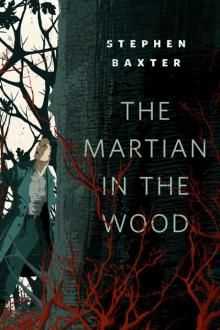 The Martian in the Wood
The Martian in the Wood THE H-BOMB GIRL
THE H-BOMB GIRL World Engine
World Engine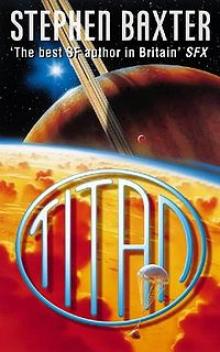 Titan n-2
Titan n-2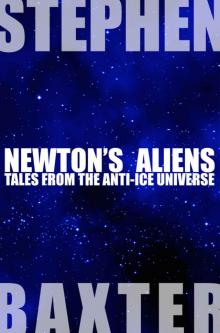 Newton's Aliens: Tales From the Anti-Ice Universe
Newton's Aliens: Tales From the Anti-Ice Universe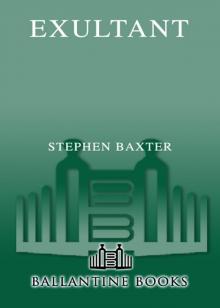 Exultant
Exultant Manifold: Origin
Manifold: Origin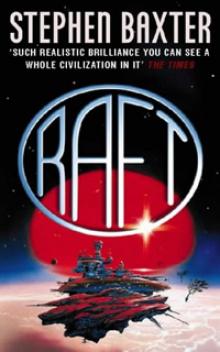 Raft xs-1
Raft xs-1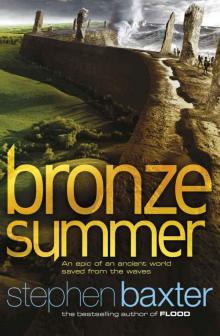 Bronze Summer n-2
Bronze Summer n-2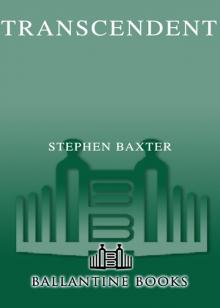 Transcendent
Transcendent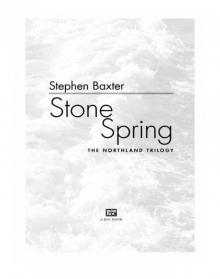 Stone Spring
Stone Spring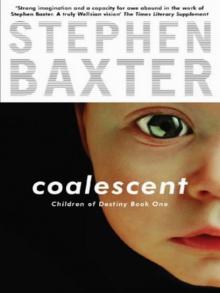 Coalescent
Coalescent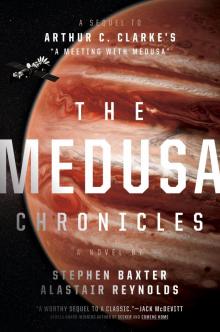 The Medusa Chronicles
The Medusa Chronicles Origin m-3
Origin m-3 Silverhair tm-1
Silverhair tm-1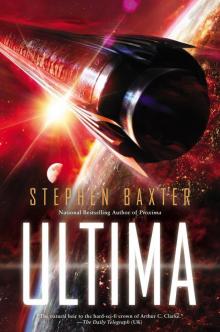 Ultima
Ultima Voyage n-1
Voyage n-1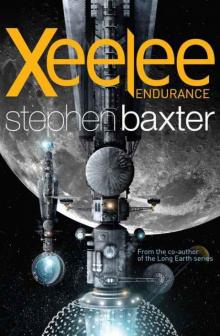 Xeelee: Endurance
Xeelee: Endurance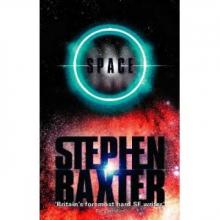 Space m-2
Space m-2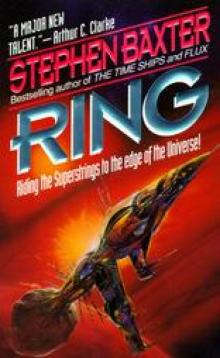 Ring xs-4
Ring xs-4 Raft
Raft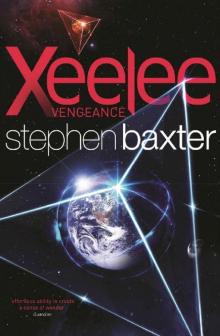 Xeelee: Vengeance
Xeelee: Vengeance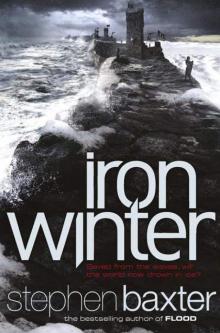 Iron Winter n-3
Iron Winter n-3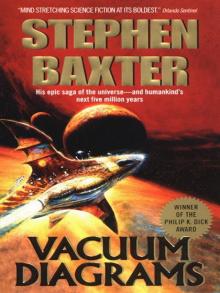 Vacuum Diagrams
Vacuum Diagrams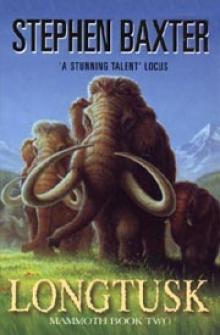 Longtusk tm-2
Longtusk tm-2 Proxima
Proxima Evolution
Evolution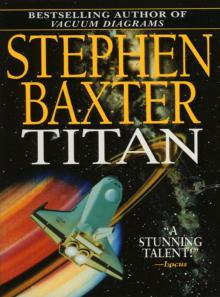 Titan
Titan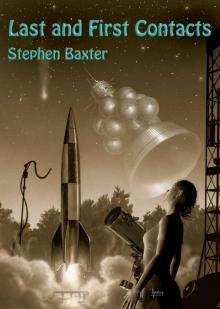 Last and First Contacts (Imaginings)
Last and First Contacts (Imaginings) Emperor
Emperor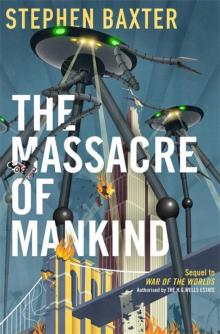 The Massacre of Mankind
The Massacre of Mankind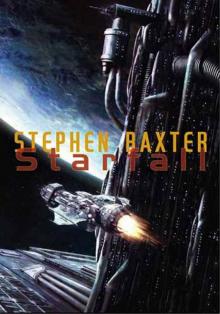 Starfall
Starfall Doctor Who - The Wheel of Ice
Doctor Who - The Wheel of Ice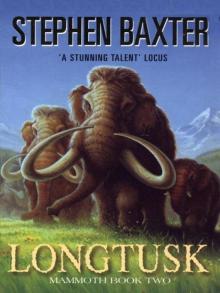 Longtusk
Longtusk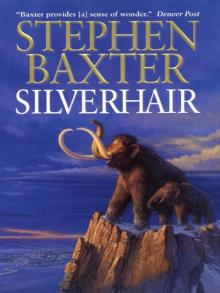 Silverhair
Silverhair Conqueror tt-2
Conqueror tt-2 Flood
Flood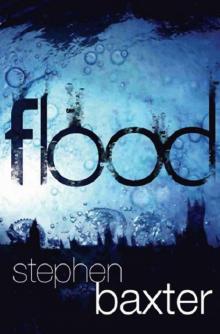 Flood f-1
Flood f-1 Emperor tt-1
Emperor tt-1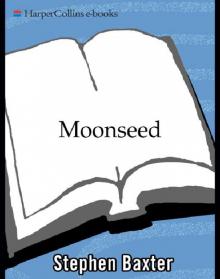 Moonseed
Moonseed Conqueror
Conqueror Timelike Infinity xs-2
Timelike Infinity xs-2 The Ghost Pit
The Ghost Pit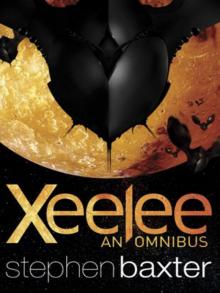 Xeelee: An Omnibus: Raft, Timelike Infinity, Flux, Ring
Xeelee: An Omnibus: Raft, Timelike Infinity, Flux, Ring Weaver tt-4
Weaver tt-4 Landfall: Tales From the Flood/Ark Universe
Landfall: Tales From the Flood/Ark Universe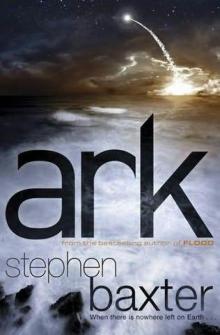 Ark
Ark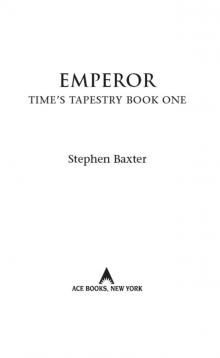 Emperor: Time’s Tapestry Book One
Emperor: Time’s Tapestry Book One Space
Space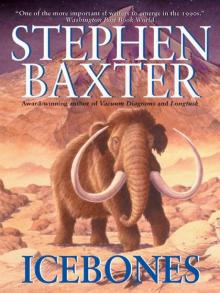 Icebones
Icebones Manifold: Space
Manifold: Space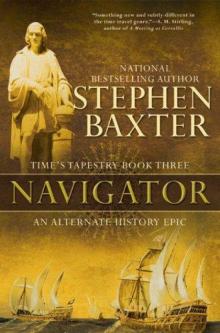 Navigator
Navigator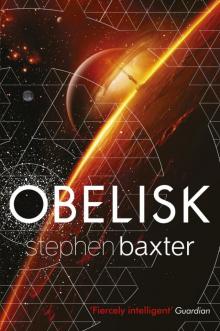 Obelisk
Obelisk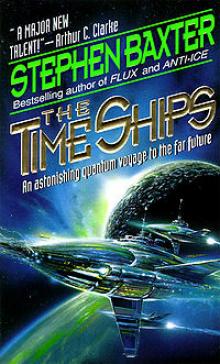 The Time Ships
The Time Ships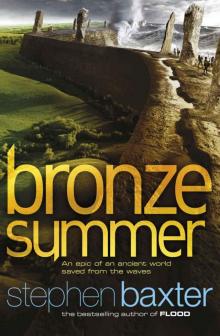 Bronze Summer
Bronze Summer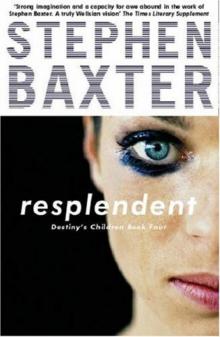 Resplendent
Resplendent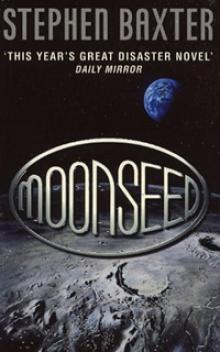 Moonseed n-3
Moonseed n-3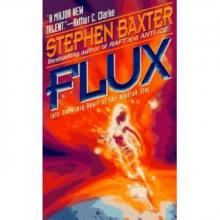 Flux xs-3
Flux xs-3 Transcendent dc-3
Transcendent dc-3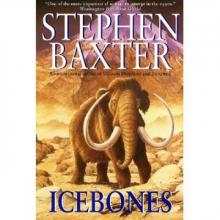 Icebones tm-3
Icebones tm-3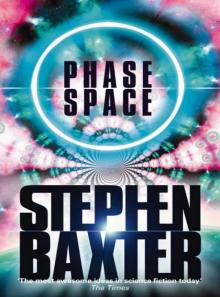 Phase Space
Phase Space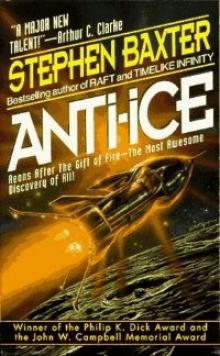 Anti-Ice
Anti-Ice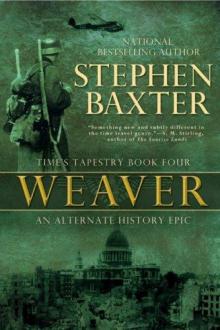 Weaver
Weaver Voyage
Voyage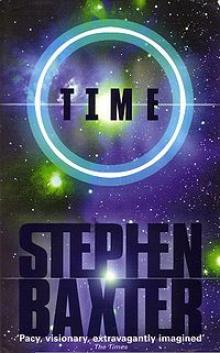 Time m-1
Time m-1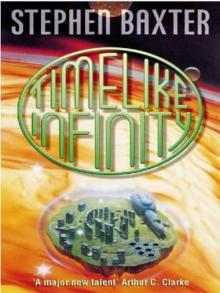 Timelike Infinity
Timelike Infinity Exultant dc-2
Exultant dc-2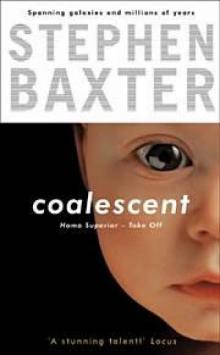 Coalescent dc-1
Coalescent dc-1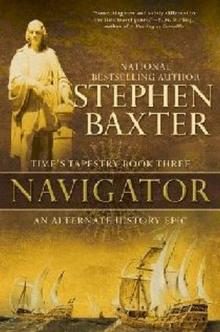 Navigator tt-3
Navigator tt-3